By Brian Hoke
The use of “foam rollers” has become a frequent tool in the exercise toolbox for active individuals. These rollers are usually about 6-8 inches thick and are composed of lightweight dense foam, sometimes with a soft outer layer. The roller is placed under a target area, usually a large muscle group, and the user then applies body weight pressure while also slowly moving the body back and forth over the roller. The roller acts as a fulcrum, or “pivot point” for the pressure and by being strategically placed, it can also put the muscle group in a better position for a sustained stretch. Low load sustained pressure on a muscle group promotes a relaxation of tension within the muscle. The following are suggestions for how you can use the foam roller to help with muscle soreness or tension on some of the major trouble spots.
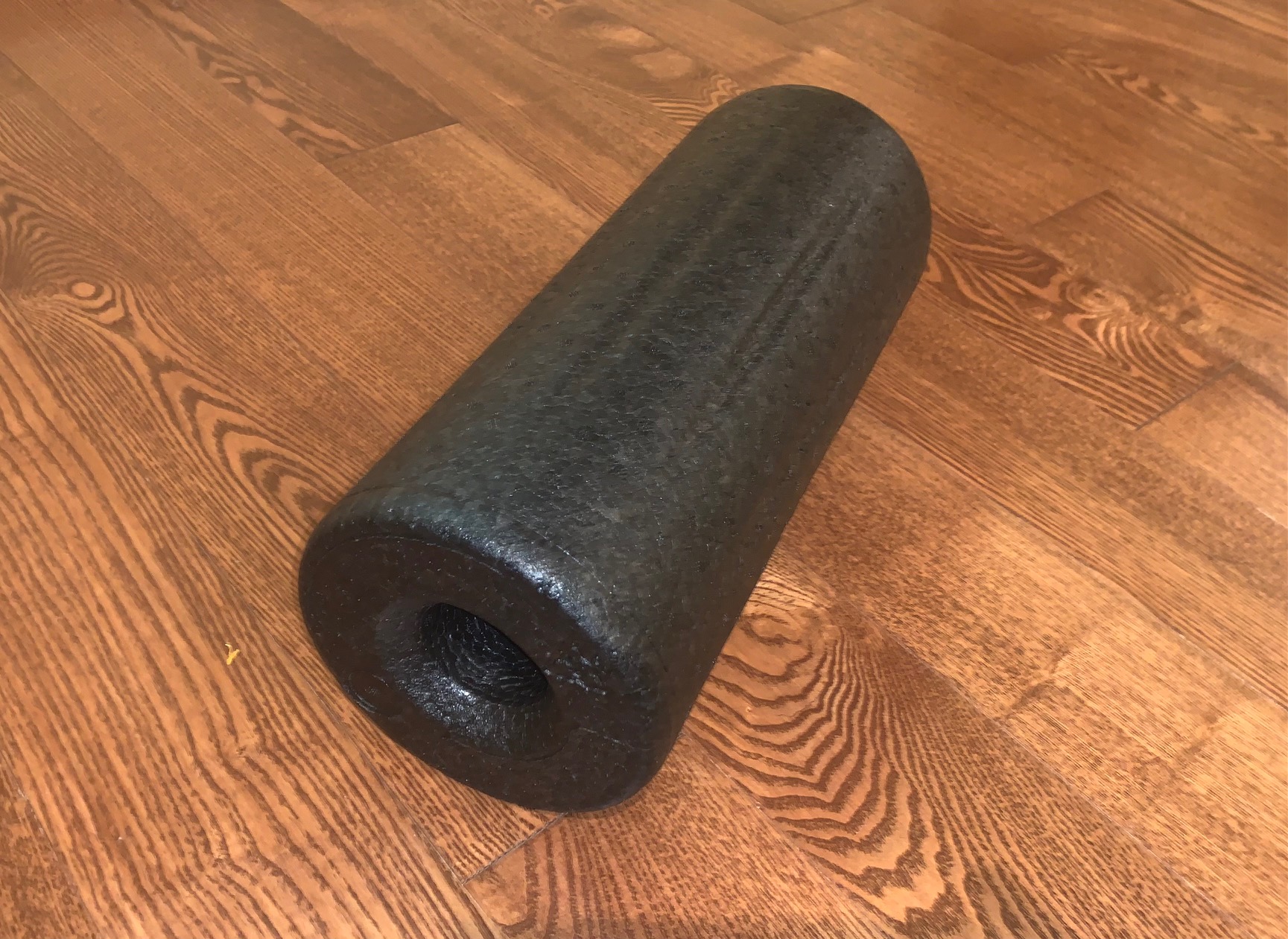
Rolling the Hip Flexor
The hip flexor (iliopsoas) muscle group is a very important muscle in creating power for walking and running. It is located in the front of the hip joint, so you begin by lying face down on the floor and position the foam roller just below your waist over the front of your hip, You then lift your trunk with your arms, similar to a “cobra” pose in yoga, and gently roll forward and backward over the foam roller. Work on the area for at least two minutes.
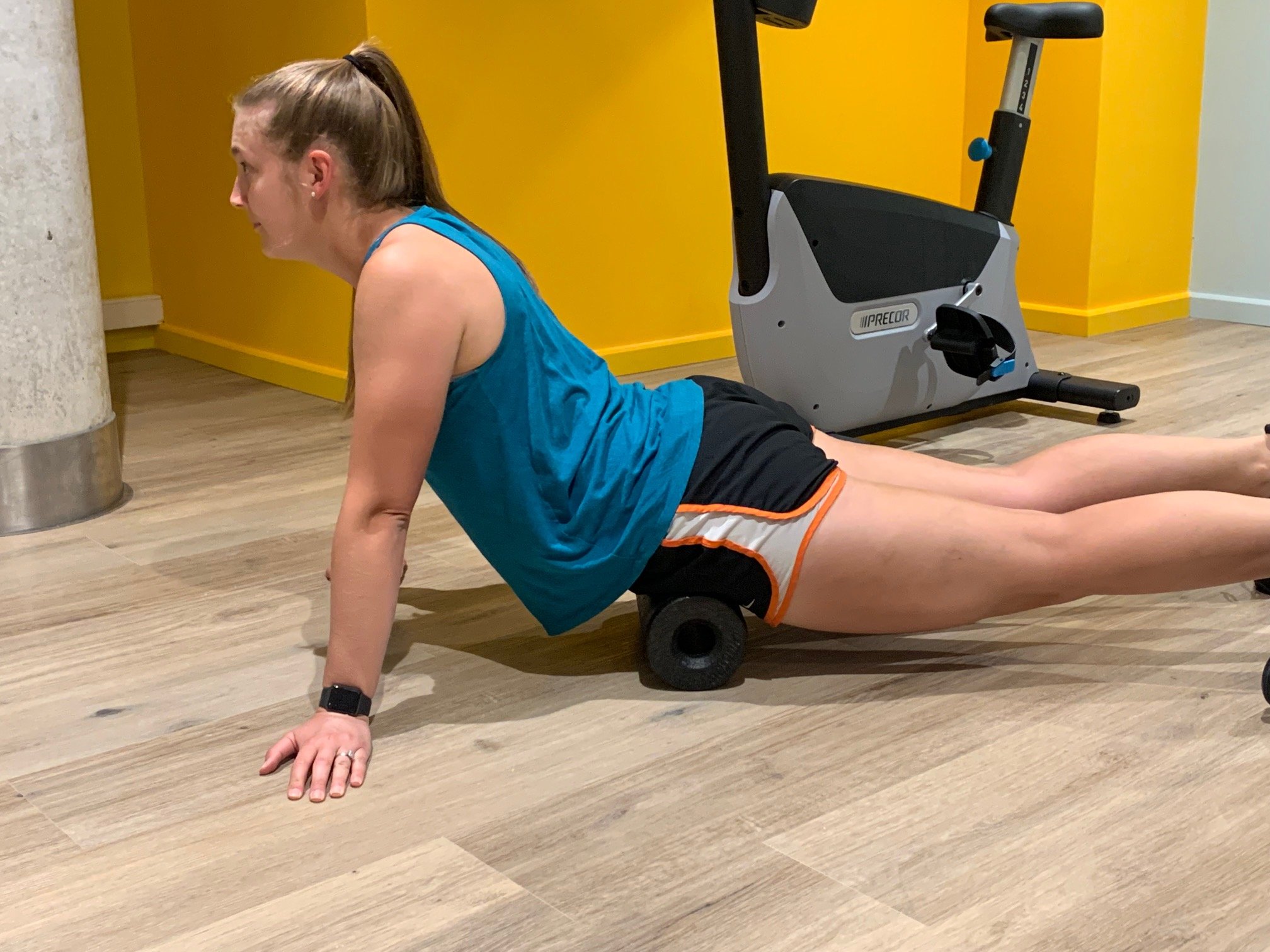
Rolling the Piriformis
The piriformis is a deep muscle in the back of the hip under the gluteus maximus muscle. Tension in this muscle is a common problem when there is problem with lower back and tailbone (lumbosacral region. It can also be associated with irritation to the sciatic nerve resulting in pain in the back of the hip and thigh. To work on this area, lie on your back and cross the leg of the hip you want to work on across the opposite knee. Place the roller under the back of the hip and use the other leg to move your body weight back and forth over the roller for at least two minutes.
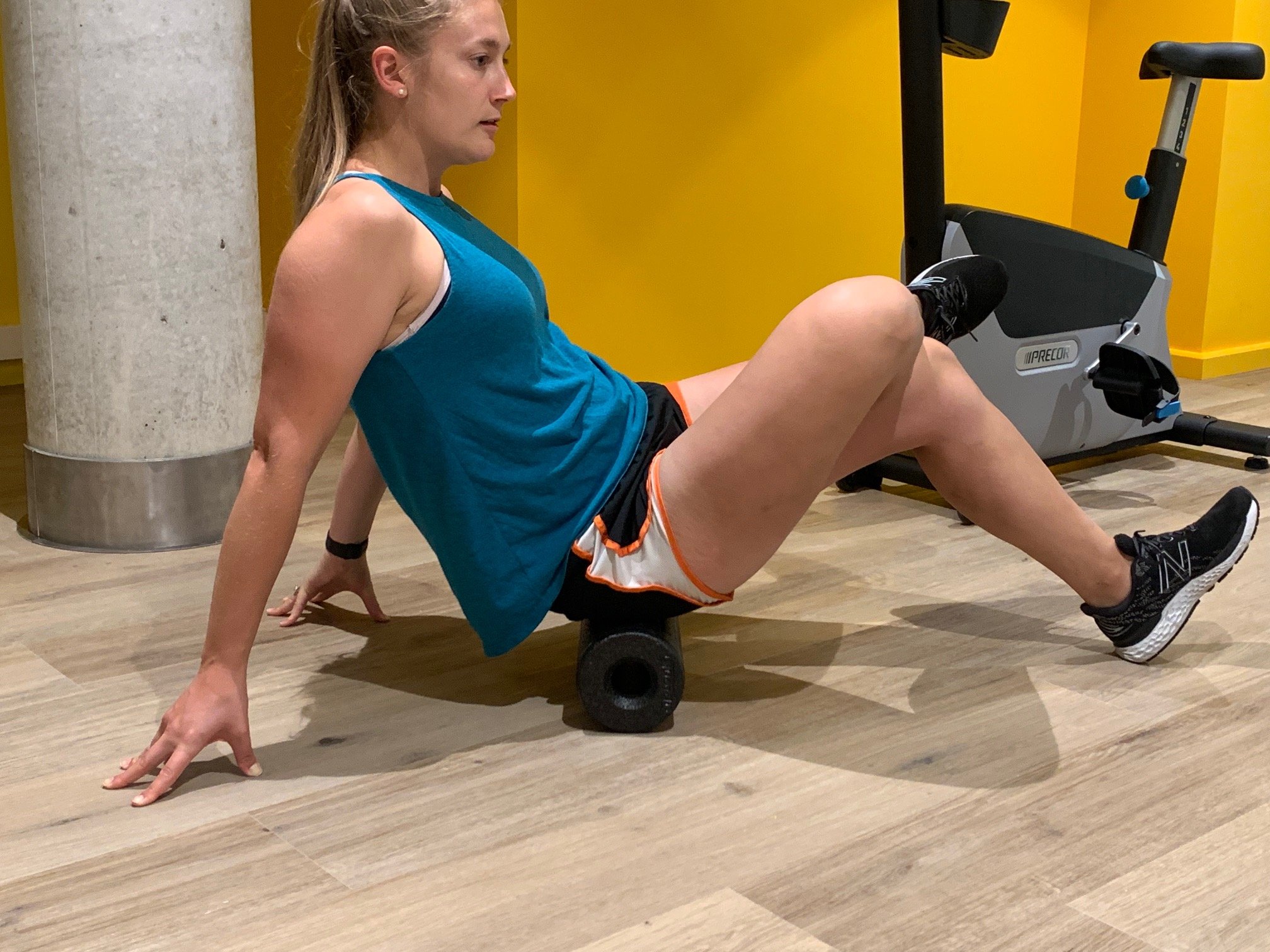
Rolling the Upper Back
Sitting for long periods can cause tension in the upper back (thoracic spine). This is particularly true when using technology and viewing a screen while working on a keyboard. We need to “reverse the curve” by straightening the rounded upper back. To do this lie on the floor face up with knees bent. Put the foam roller under the rib area just below the shoulder blades and place your hands behind your head. Lift your hips to increase the pressure on the roller and gently roll back and forth for at least 2 minutes.
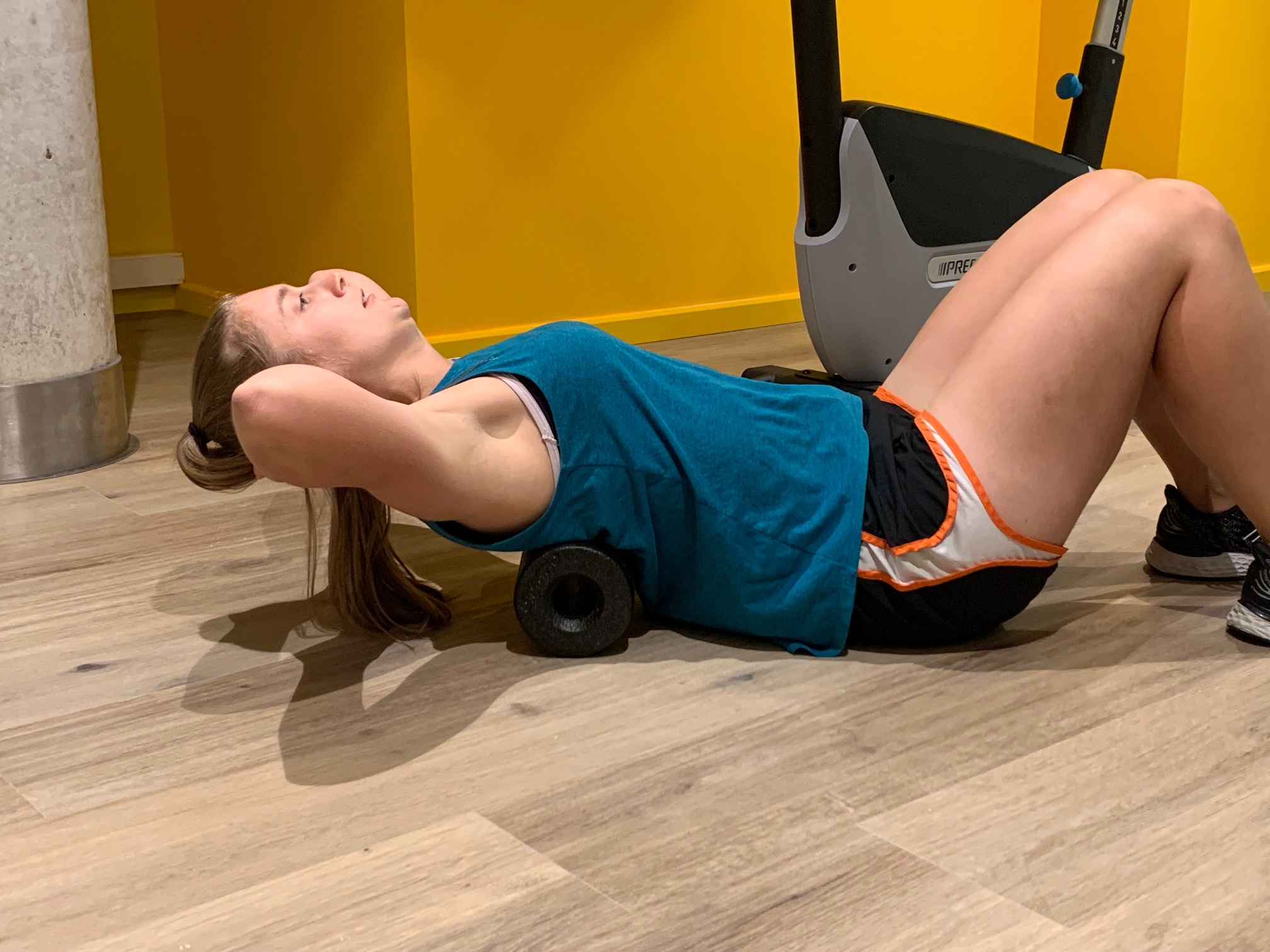
Rolling the IT Band
Tension in the outer thigh is very common, especially in runners. The long, flat tissue of the outer thigh is known as the iliotibial band, also known as the IT band. To work on this area, lie on your side and place the roller below the hip bone. Lift up and support your weight on your hand, then rock your weight back and forth on the roller for at least 2 minutes. You may find it helpful to move the roller down the thigh further to work on the entire length of the IT band.
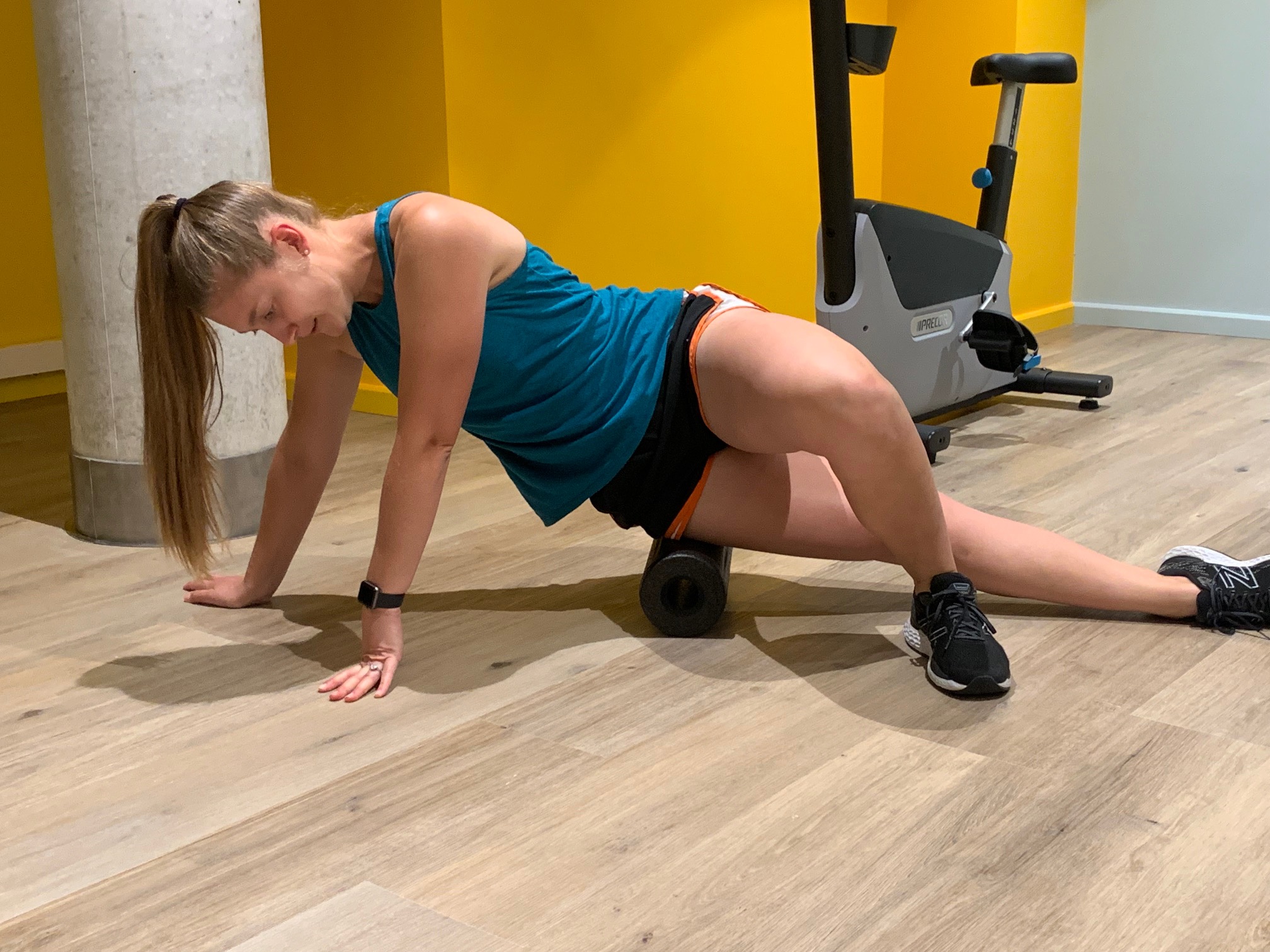
Rolling the Calf Group
The calf muscles are among the most powerful in the leg and are used continuously in walking, fitness activities, and sports. It is not uncommon to develop delayed muscle soreness in this group after periods of higher-level activity. To work out some of the tension in these muscles, sit on the floor with your legs out straight. Put the roller under the calf area below the knee. Lift your hips and then gently roll back and forth over the foam roller for at least 2 minutes. You may find it helpful to do this both with the feet pointed downward as well as with the feet actively pulled upward.
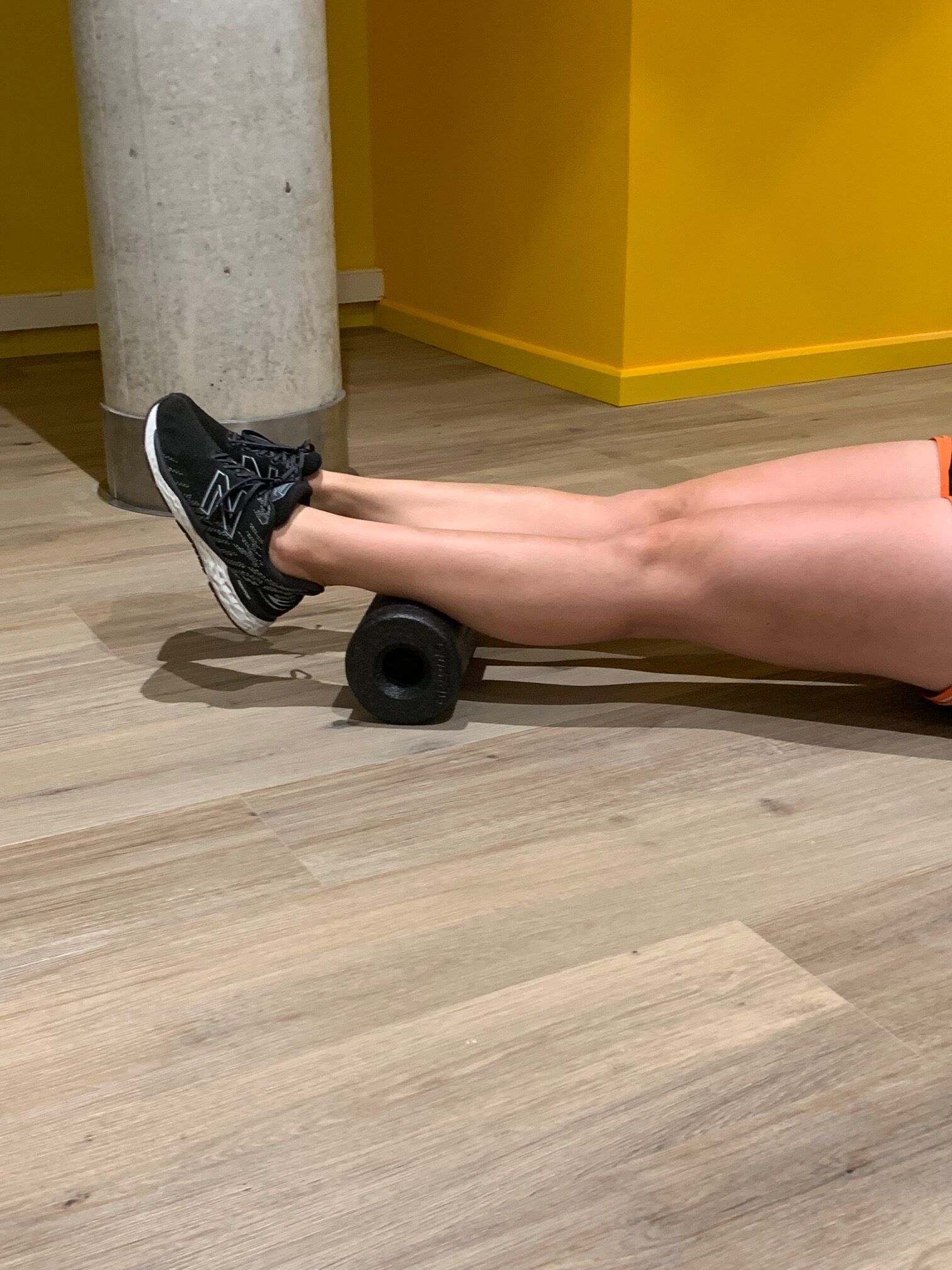
Make the Foam Roller Your Friend
The foam roller can be a useful tool to help self-manage unwanted tension and soreness in the muscles. Maybe make it a part of your daily routine if you find that you tend to have tightness in certain muscles. If this is not managing the issue effectively, it may also be helpful to consult with a knowledgeable massage therapist to augment your efforts. I hope these exercises help you achieve your wellness goals!
About the Author:
Specializing in orthopedic and sports physical therapy, Brian Hoke, DPT, SCS has a particular interest in the biomechanical factors influencing lower limb rehabilitation. He is owner of Atlantic Physical Therapy, a private practice in Virginia Beach, VA.
Brian is a board certified Clinical Specialist in Sports Physical Therapy, a distinction achieved by fewer than 600 physical therapists in the U.S. He works with athletes of all levels—from recreational runners to elite professional and Olympic athletes. He has contributed chapters to two textbooks on the treatment of running injuries.
Brian is an avid educator, lecturing extensively in the U.S. and internationally. Since 1985, he has been a faculty member of the popular continuing medical education seminar, “When the Feet Hit the Ground, Everything Changes.” He co-developed and has taught the “Take the Next Step” course since 1990. In addition, he has been an adjunct faculty member of physical therapy programs at Old Dominion University and Touro College on Long Island, NY.
Brian’s expertise in sports physical therapy is a particular asset to Vionic’s athletic line of footwear. He and Phillip Vasyli have also collaborated to create a foot orthotic designed for problems with supination—when feet roll outward too much.

Leave a Reply